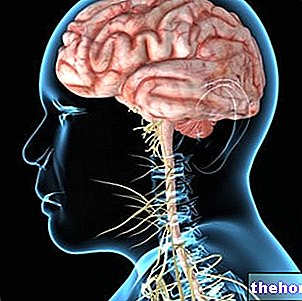«Definition, Causes, Symptoms and Risk Factors
Diagnosis
Diagnosing a TIA in full swing is difficult and unlikely. In fact, the duration of a transient ischemic attack is so short that by the time you reach the doctor or hospital for checks, the disorder has already disappeared spontaneously. However, although it may seem a limit to the diagnosis, this characteristic of the event, that is its temporariness, is already rich in information, because it is typical of TIA.
Furthermore, with the help of clinical and instrumental examinations, it is possible to definitively clarify the situation and understand:
- Which area of the brain was affected
- The causes
.jpg)
Figure: Difference between TIA and Stroke. From the site: sanremonews.it
Making sure that it was indeed a TIA is essential to set the most appropriate therapy and to take the right countermeasures.
HISTORY AND OBJECTIVE EXAMINATION
The doctor questions the patient and the people who were with him (usually family members) about the characteristics of the symptoms: on which parts of the body the tingling was felt, if language skills were lost, if coordination was lacking motor etc.
In addition, it is very important for the doctor to understand if the individual has a family history of stroke, TIA or heart attack, if he has chronic hypertension, high cholesterol, arrhythmias, etc.
BLOOD TESTS
Very quick blood tests can be done to evaluate:
- The blood clotting abilities. The tendency to form blood clots more easily could predispose to the formation of thrombus or emboli within the blood vessels.
- Blood pressure. High blood pressure (hypertension) is a major cause of TIA and stroke.
- Blood cholesterol levels. High levels are often associated with TIA, stroke, and heart problems.
- The levels of glucose in the blood (blood sugar). Diabetes, a major risk factor for TIA and stroke, results in high blood glucose values.
- The homocysteine levels. High levels are usually linked to TIA, stroke, and cardiovascular disorders in general.
INSTRUMENTAL EXAMINATIONS
The instrumental examinations, able to provide the doctor with important information to clarify the causes and modalities of the TIA, are numerous. Below are the instrumental tests (and their characteristics) most useful in cases of TIA and stroke.
Instrumental examination
Direct CT (computed tomography) and angio-CT
It shows the brain in detail and allows you to understand which area is affected. It also recognizes if there are other brain disorders, such as a tumor.
If you use a contrast fluid (angio-CT), you can observe the blood flow in the arterial and venous vessels of the neck and brain. It is an invasive test, as it uses harmful ionizing radiation, albeit in a minimal dose. .
Nuclear magnetic resonance (MRI) and MRI angiography
It provides a detailed picture of the brain and shows whether brain tissue has been damaged after TIA. Blood flow in arterial and venous vessels can be visualized using contrast fluid (MRA).
Carotid ultrasound
It provides precise images of the carotids and their internal cavities. If there are any atherosclerotic plaques, they are detected.
Cerebral angiography
Thanks to a contrast fluid, injected through a catheter, it is possible to see (on X-rays) how "is the blood circulation" inside the large vessels (carotids and vertebral arteries), which reach the brain.
Echocardiogram (transesophageal transthoracic echocardiogram)
If the TIA is due to embolism, these two tests allow us to identify where in the heart the emboli come from. The transesophageal echocardiogram uses an ultrasound probe, which is inserted through the esophagus and shows the heart and any clots.
Therapy
Once the diagnosis of transient ischemic attack has been ascertained, and all the necessary information has been collected, the treatment is proceeded. The goal of TIA therapy is to correct thrombotic or embolic disorders affecting arterial vessels, to prevent future similar (another TIA) or more severe (stroke) episodes.
Therapeutic treatment must also be based on the causes that triggered the disorder: each patient, therefore, must be treated as a case in itself.
THE PHARMACOLOGICAL TREATMENT
A patient with TIA is prone to thrombosis or embolism. Therefore, to make the blood more fluid and dissolve any clots, which could clog the arteries, the following drugs are given:
- Anticoagulants. The classic ones are heparin and warfarin (or coumadin). Their mechanism of action takes time, however they are essential for diluting the blood and slowing down the clotting process. If the patient has atrial fibrillation, dabigatran is used.
- Antiplatelet agents. The most widely used antiplatelet agent is aspirin; alternatively, dipyridamole and clopidogrel are used. These drugs reduce the ability of platelets to bind together when they intervene to seal a lesion.
For further information: Drugs to Treat "Transient Ischemic Attack"
THE SURGICAL TREATMENT
The carotids, as we have seen, are deeply analyzed, because they could be occluded by a thrombus or by an atherosclerotic plaque. If this occlusion is serious and exposes the patient to a stroke episode, it is necessary to proceed to clear the passage and thus allow normal blood flow.
There are two possible interventions:
- Carotid endarterectomy
The surgeon, through an incision at the level of the neck, intervenes on the carotid artery, replacing the portion occluded by the atherosclerotic plaque with small pieces of artificial tissue. At the end of the intervention, he closes the incision. - Angioplasty and stent
The surgeon inserts a stent, which is an expandable metal tube, at the level of the carotid artery. Conducted at the point where there is the occlusion, the tube is inflated to reopen the vessel blocked by the atherosclerotic plaque.
Prognosis and prevention
Talking about the prognosis of a transient ischemic attack is not easy, as each patient with TIA is a case in itself.
_2.jpg)
Figure: The surgical technique of angioplasty and stent.
For example, a shrewd patient, who recognizes the symptoms and goes to their doctor for further tests and treatment, will run less risk of developing similar or more serious disorders, such as stroke. Conversely, a patient who, after the symptoms have passed. of the TIA, does not undergo the necessary examinations and treatment, is at high risk of relapse and stroke.
These two situations are valid in general, however it should not be forgotten that a TIA, even if treated adequately, still requires continuous monitoring. In fact, there may be a family predisposition to the origin of the transient ischemic attack and this, as we have seen, is an untreatable risk factor.
PREVENTION
Prevention is important in any disease and TIA is no exception.
As with stroke, preventive measures are developed on three levels: primary, secondary and tertiary.
Primary prevention consists in controlling all those treatable risk factors. Therefore, it is good to adopt a healthy lifestyle, free from excesses in the diet, not smoking, exercising, etc.
Secondary prevention is based on the early diagnosis of predisposing circumstances and their eventual cure / correction (pharmacological, surgical and behavioral). Therefore, it is advisable to carry out periodic checks, especially if you are predisposed, due to age or family history, for TIA or stroke.
Finally, tertiary prevention. It is put into practice in confirmed cases of TIA, which are at high risk of stroke. For these patients, already affected by a transient ischemic attack, surgery, drug therapy and scrupulous care of their behavioral habits may be necessary.
Preventive measures against transient ischemic attack (TIA), stroke and heart attack:
- Check the pressure periodically and keep it at adequate levels
- Keep blood cholesterol levels low
- Not smoking
- Check your blood sugar periodically and keep it at adequate levels
- Lose weight if you are overweight
- Diet rich in fruits and vegetables
- Exercise regularly
- Do not drink alcohol (if you are predisposed) and, in general, do not exceed in quantities
- Do not use drugs such as cocaine etc.




























